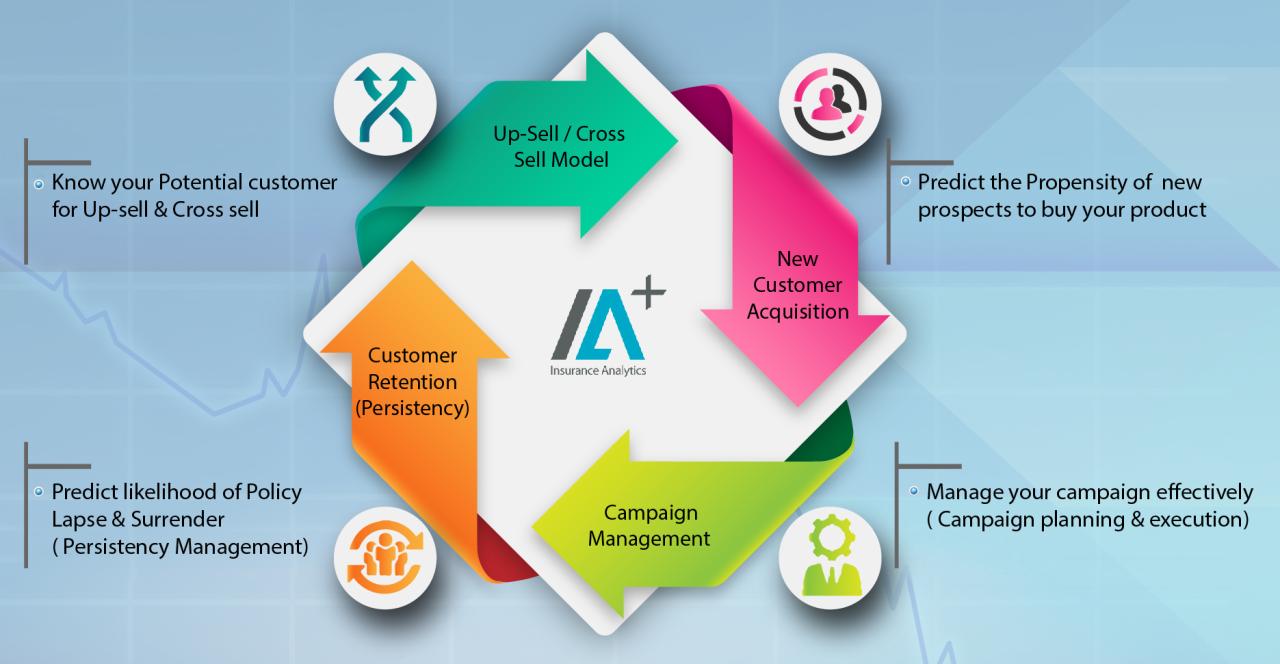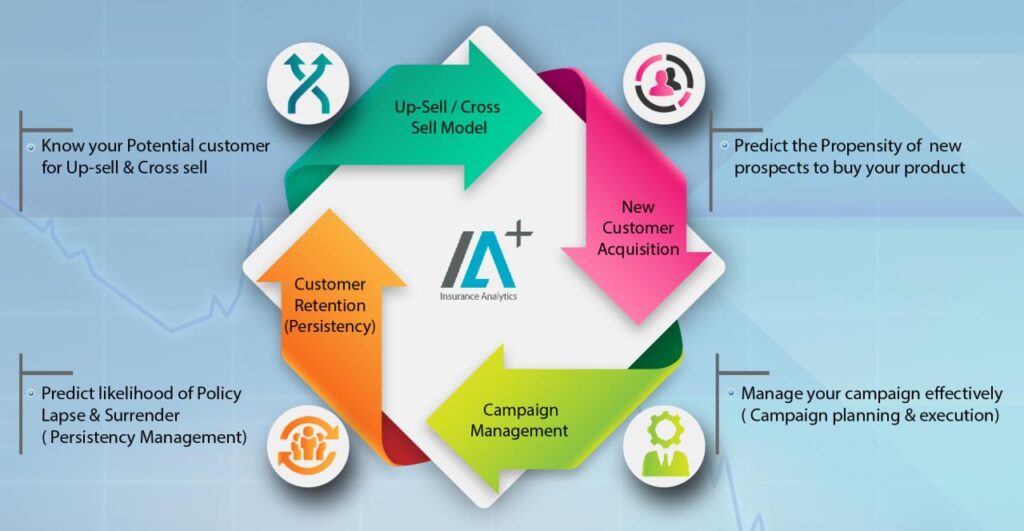Overview of Predictive Analytics in Insurance
Predictive analytics is a powerful tool that uses historical data and statistical techniques to predict future outcomes. In the insurance industry, predictive analytics is used to assess risk, set premiums, and detect fraud.
Predictive analytics can help insurers identify high-risk customers who are more likely to file claims. This information can be used to set premiums that are more reflective of the risk involved, which can help to reduce the cost of insurance for low-risk customers.
Predictive analytics can also be used to detect fraud. By analyzing claims data, insurers can identify patterns that are indicative of fraud. This information can be used to investigate claims and take action against fraudulent activity.
Benefits of Using Predictive Analytics in Insurance
- Improved risk assessment
- More accurate premium setting
- Reduced fraud
- Improved customer service
Challenges of Using Predictive Analytics in Insurance
- Data quality
- Model complexity
- Interpretability
- Regulatory compliance
Applications of Predictive Analytics in Insurance

Predictive analytics has numerous applications in the insurance industry, revolutionizing various aspects of insurance operations. It enables insurers to make informed decisions, enhance risk assessment, and optimize their processes.
Underwriting
Predictive analytics plays a crucial role in underwriting, where insurers evaluate the risk associated with insuring an individual or business. By analyzing historical data, demographic information, and behavioral patterns, insurers can predict the likelihood of a claim and determine appropriate premiums.
Pricing
Predictive analytics assists insurers in setting competitive and accurate premiums. It considers factors such as risk profiles, claims history, and market trends to determine optimal pricing that balances profitability and customer satisfaction.
Claims Management
Predictive analytics helps insurers identify and prioritize claims that are likely to be fraudulent or require additional investigation. By analyzing patterns in claims data, insurers can flag suspicious claims, reducing the risk of financial losses and improving the efficiency of the claims process.
Fraud Detection
Predictive analytics is a powerful tool for fraud detection in insurance. It analyzes large volumes of data to identify unusual patterns or anomalies that may indicate fraudulent activity. Insurers can use predictive models to detect potential fraud schemes and take appropriate action.
Data Sources for Predictive Analytics in Insurance
Predictive analytics in insurance relies on a wide range of data to make accurate predictions and identify patterns. These data sources can be internal or external, structured or unstructured, and include both historical and real-time information.
The key challenge in using data for predictive analytics in insurance is collecting and integrating data from various sources. This requires data integration techniques, data cleansing, and data transformation to ensure the data is consistent, accurate, and usable.
Internal Data Sources
- Policy data: Information about insurance policies, such as policy type, coverage, premiums, and claims history.
- Claims data: Details about insurance claims, including the cause of loss, claim amount, and settlement details.
- Underwriting data: Information about the underwriting process, such as risk assessment, underwriting guidelines, and pricing models.
- Customer data: Information about policyholders, such as demographics, location, occupation, and lifestyle factors.
External Data Sources
- Third-party data: Data from external sources, such as credit bureaus, weather data providers, and social media platforms.
- IoT data: Data from sensors and devices, such as telematics data from vehicles or health data from wearable devices.
- Public data: Data from government agencies, industry reports, and research studies.
Techniques for Predictive Analytics in Insurance
Predictive analytics in insurance involves leveraging various techniques to analyze data and make predictions about future events. These techniques include:
Machine Learning
Machine learning algorithms enable computers to learn from data without explicit programming. They are trained on historical data to identify patterns and make predictions. In insurance, machine learning is used for tasks such as:
- Fraud detection
- Risk assessment
- Pricing optimization
Statistical Modeling
Statistical modeling involves using statistical techniques to analyze data and make predictions. It is commonly used in insurance for:
- Predicting claims frequency and severity
- Setting insurance premiums
- Assessing the impact of risk factors
Data Mining
Data mining is the process of extracting valuable information from large datasets. It is used in insurance to:
- Identify hidden patterns and trends
- Develop predictive models
- Segment customers based on risk profiles
Challenges and Considerations for Implementing Predictive Analytics in Insurance
Implementing predictive analytics in insurance presents several challenges and considerations that insurers must address. These include:
- Data quality and availability: Predictive analytics relies heavily on data quality and availability. Insurers must ensure that they have access to accurate, complete, and relevant data to build robust predictive models.
- Model interpretability and explainability: Predictive models can be complex, making it difficult for insurers to understand how they work and the factors that drive their predictions. This lack of interpretability and explainability can hinder the adoption and trust in predictive analytics solutions.
- Regulatory compliance: The insurance industry is heavily regulated, and insurers must ensure that their use of predictive analytics complies with all applicable regulations. This includes ensuring that models are fair, unbiased, and do not discriminate against protected classes.
Future Trends in Predictive Analytics in Insurance
Predictive analytics in insurance is continuously evolving, and several emerging trends are expected to shape its future. These trends will enable insurers to enhance their risk assessment capabilities, improve customer experiences, and drive innovation.
One significant trend is the increasing adoption of artificial intelligence (AI) and machine learning (ML) algorithms. AI and ML can analyze vast amounts of data and identify complex patterns that traditional statistical methods may miss. This will allow insurers to develop more accurate and personalized risk models.
Real-Time Risk Assessment
Real-time risk assessment is another emerging trend in predictive analytics. By leveraging IoT devices and telematics data, insurers can monitor customer behavior and assess risk in real-time. This will enable them to provide personalized insurance policies that adapt to changing circumstances.
Usage-Based Insurance
Usage-based insurance (UBI) is gaining popularity as a way to reward customers for safe driving habits. Predictive analytics can be used to analyze telematics data and determine individual risk profiles, allowing insurers to offer customized premiums based on actual usage.
Personalized Customer Experiences
Predictive analytics can also be used to enhance customer experiences. By analyzing customer data, insurers can identify their preferences and offer tailored products and services. This will help build stronger relationships and increase customer satisfaction.
New Insurance Products and Services
The use of predictive analytics is leading to the development of new insurance products and services. For example, insurers are exploring parametric insurance, which provides coverage based on specific events rather than actual losses.
Regulatory Compliance
Predictive analytics can also assist insurers in meeting regulatory compliance requirements. By analyzing data, insurers can identify potential risks and take proactive measures to mitigate them.







